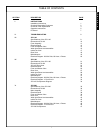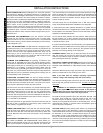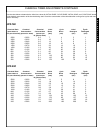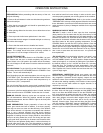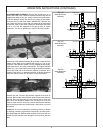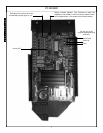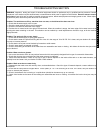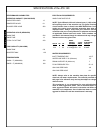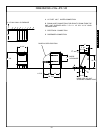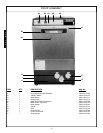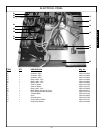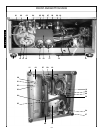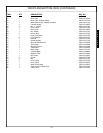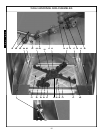
WARNING: Inspection, testing and repair of electrical equipment should be performed only by qualified service personnel. Certain
procedures in this section require electrical tests or measurements while power is applied to the machine. Exercise extreme caution
at all times. If test points are not easily accessible, disconnect power, attach test equipment and reapply power to test. When replac
-
ing electrical parts, disconnect power at source circuit breaker.
Problem: The tank does not fill up, machine does not start, or the dishmachine does not rinse.
1. Check that the water supply valve is open.
2. Check the water softener supply and connections.
3. Check the connections and fuses of the supply.
4. Examine the air vessel at the rear right of the wash tank. When the machine is empty, the lower edge of this vessel must not be
touching the water remaining in the tank. This situation can be avoided by a small adjustment to the feet or legs, to tilt the machine
slightly forwards.
Problem: The tank only fills up very slowly.
1. Check that the water supply is giving good pressure.
2. Check that the water line pressure during the fill or rinse is in the range of 15 to 25 PSI. If it is lower, ask your dealer to fit a boost
-
er pump to increase pressure.
3. Check that the rinse jets are not blocked by limescale or solid wastes.
4. Check if water hoses are trapped or kinked.
5. Check if the bushing at the center of the wash/rinse arm assemblies are loose or missing - this allows dirt into the rinse jets, which
may be blocked.
Problem: Water marks on glasses.
1. Use correct chemicals, which do not produce foam and which are specially designed for this type of commercial dishmachine.
2. Check that rinse jets are not blocked and the water pressure is adequate.
3. Check the water hardness. If there is any sign of grey or brown deposits on the inside of the tank or on the wash elements, you
probably have hard water. Ask your dealer to install a water softener.
Problem: Wash arms do not rotate freely.
1. Disassemble the wash arms and carefully clean, as described above. Check for signs of limescale deposit; a water softener may
be required.
2. Check that the inlet pressure is higher than 2 1/2 bar (static) or 1 to 1 1/2 bar during fill or rinse. If it is lower, ask your dealer to fit
a pump to increase the pressure.
3. Check if the deflector disc is missing or is upside down (should be the same way up as a saucer).
4. Check if the bushes at the center of the rotating arm assemblies are loose or missing - this allows dirt into the rinse jets, may be
blocked.
TROUBLESHOOTING SECTION
8
T
R
O
U
B
L
E
S
H
O
O
T
I
N
G



